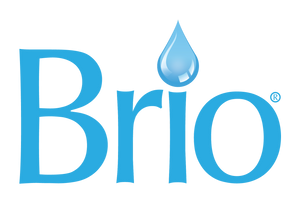It’s no secret that there is a mounting number of contaminants in Americans’ tap water. The most recent update to the Environmental Working Group’s Tap Water Database shows that millions of Americans are drinking water tainted with heavy metals, harmful chemicals, and even radioactive substances. Many levels are far above what scientists consider to be safe.
The latest analysis identified 324 contaminants, so where do total dissolved solids (TDS) come into play?
This guide dives deeper into what TDS are, how they are measured, why they are a concern, and what can be done about them.
What Are Total Dissolved Solids (TDS)

Total Dissolved Solids (TDS) is a measure of the total mass of minerals, salts, organic compounds, and other substances that are dissolved in a specific volume of water.
There are some dissolved solids, like essential minerals, that are beneficial at certain levels. However, high levels of even beneficial TDS can become noticeable when you pour a glass of water or take a sip. For example, high levels of calcium can cause cloudiness.
Then there are harmful contaminants that contribute to the total amount of dissolved solids.
A high TDS reading does not distinguish between good and bad dissolved solids. High levels of calcium or magnesium can contribute to a high reading, as can nitrates and heavy metals. Since sources and levels of contamination can differ, it’s a good idea to test your water to find the best solution.
Some sources of TDS in water are natural processes, such as contact with rock and soil. In other cases, human activity is the primary source, including contamination from sewage, agricultural runoff, and industrial waste.
What Might You Find in TDS?
There are many possible substances in TDS, including:
• Organic compounds, both living and non-living
• Inorganic salts, including sulfates, chlorides, and nitrates
• Metals like copper, iron, and zinc
• Minerals, such as magnesium, calcium, and potassium
How Can I Measure TDS in My Water

Portable TDS meters are the most common and inexpensive way to measure total dissolved solids in your water. These meters read a water source’s electrical conductivity to estimate the amount of potential dissolved solids.
There are more complex methods that involve water evaporation to weigh the remaining solids or sending samples to professional labs that perform comprehensive analyses.
While at home, simply purchase a TDS meter and take a reading. Some TDS meters work as easily as that, including Brio’s TDS Meter Water Quality Tester. Simply turn it on, place the meter in your water sample, and read the results.
Based on that reading, compare your results to the current EPA guidelines, which consider a TDS level below 500 mg/L (500 ppm) to be the safe limit for drinking water.
Read more: Water Filtration Stages: Which Water Filter Removes The Most Contaminants?
Problems Associated With High Levels of TDS in Water

High TDS levels can indicate potential issues with water quality, even if the dissolved substances aren’t necessarily harmful to your health. For example, TDS may contribute to changes in the taste and color of your water. Your water could taste bitter, salty, or metallic.
If this poor quality of water deters people from drinking it, they could experience higher rates of dehydration. Depending on the contaminants found in your water, you may also increase your risk of health issues, especially if your water sample contains harmful substances like arsenic and lead.
You can also experience issues related to:
• Scale buildup: When mineral deposits build up in appliances and pipes, efficiency is reduced, and you could face costly repairs.
• Corrosion: Your plumbing systems may also deteriorate at a faster pace due to high concentrations of TDS.
• Hard water: You could experience the negative effects of hard water. Hard water refers to high levels of dissolved magnesium and calcium, so it typically has high TDS levels. However, a high TDS level doesn’t automatically mean you have hard water.
What Systems Can Lower TDS, and How Do They Work?
When it comes to actively lowering TDS, you have several options, including reverse osmosis (RO), deionization, and distillation systems.
The best system for you will depend on your desired level of purity. For comprehensive removal of heavy metals, mineral salts, and other contaminants, an RO system is often the most effective. To give you an idea of what you can install in your home or office, here are two effective solutions when targeting
Brio Undersink RO Systems

Brio offers a range of tankless RO systems that are powerful, space-saving, and customizable.
Here are some of the options to explore:
• AQUUS: This contemporary system features a smart faucet and is available in 600, 800, 1000 & 1200 GPD.
• PRISM: This elegant system features 3-in-2 premium RO filtration, providing up to 600 GPD.
• G20: This sleek, curved tankless design provides cutting-edge filtration, thanks to its 4-in-2 filter system, delivering up to 700 gallons per day.
Brio 4-Stage RO Water Coolers

You can also opt for a bottleless water cooler, including a range of 4-stage RO systems and designs.
The Brio Moderna 730 Series 4-Stage Reverse Osmosis Bottleless Water Cooler is a standout option, offering the latest in innovation and style. Enjoy advanced filtration that targets the major contaminants impacting the taste and color of your water. Learn more.
Brio Can Help You Target and Reduce TDS in Your Water

Improving your water quality can be a relatively straightforward process. At Brio, we can help you find the best solution for your needs.
Browse our complete collection of water filtration options and contact our team with any questions.




